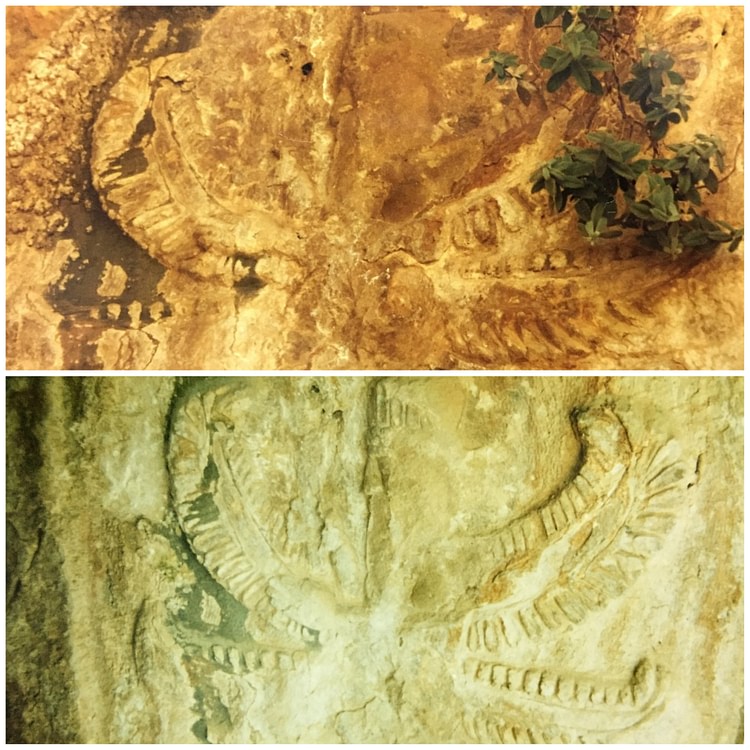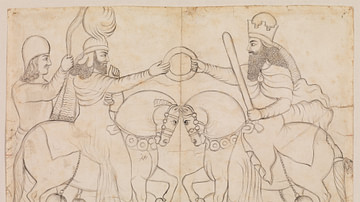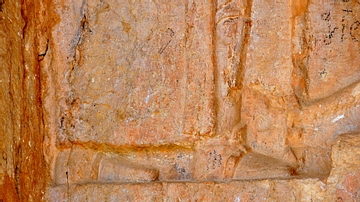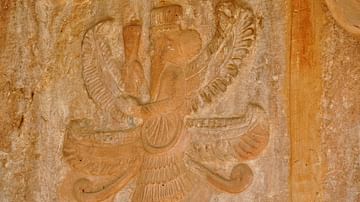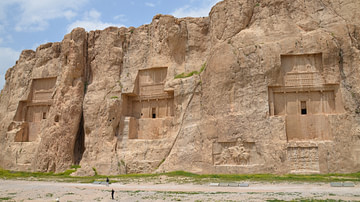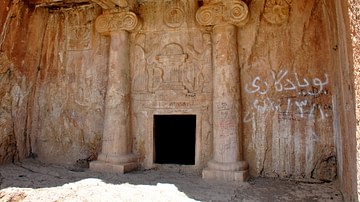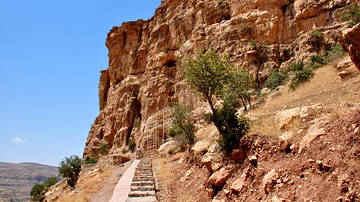Illustration
Two close-up images of “Ahura Mazda” at the façade of the rock-cut tombs of Ashkawt-i Qizqapan (Kurdish: The Cave of the Ravisher or the Cave of the Raped/Abducted Girl). The upper image dates to June 14, 1999, while the lower one was shot on October 29, 2002, just before the restoration/conservation work, which was carried out by the Directorate General of Antiquities of Sulaymaniyah. Median-Achaemenid Period, 600-330 BCE. Near Zarzi village and the Palaeolithic cave of Zarzi, Chemi Rezan Valley, Sulaymaniyah Governorate, Iraqi Kurdistan. Photos courtesy Hashim Hama Abdullah, director of the Sulaymaniyah Museum.
Cite This Work
APA Style
Museum, S. (2018, January 23). Ahura Mazda, The Rock-Cut Tombs of Qizqapan. World History Encyclopedia. Retrieved from https://www.worldhistory.org/image/8004/ahura-mazda-the-rock-cut-tombs-of-qizqapan/
Chicago Style
Museum, Sulaymaniyah. "Ahura Mazda, The Rock-Cut Tombs of Qizqapan." World History Encyclopedia. Last modified January 23, 2018. https://www.worldhistory.org/image/8004/ahura-mazda-the-rock-cut-tombs-of-qizqapan/.
MLA Style
Museum, Sulaymaniyah. "Ahura Mazda, The Rock-Cut Tombs of Qizqapan." World History Encyclopedia. World History Encyclopedia, 23 Jan 2018. Web. 23 Oct 2024.
